Imagine a creature so determined to survive that it shatters its own bones to unleash hidden weapons. It sounds like something from a nightmare or a superhero comic book, doesn’t it? Yet, deep in the rainforests of Central Africa, such an animal exists. Meet the Hairy Frog, also ominously known as the “Wolverine Frog.” With its bizarre defense mechanism, wild appearance, and mysterious habits, the Hairy Frog leaves scientists and nature lovers equally fascinated—and a little disturbed.
A Strange and Startling Appearance

The Hairy Frog isn’t your average amphibian. At first glance, it stands out with a robust body covered in skin filaments that look uncannily like hair, especially on the males during breeding season. These strange filaments aren’t actual hair but extensions of the skin, and they serve a vital role in helping the frog absorb more oxygen when it’s underwater. Imagine a creature that looks half mammal, half amphibian, lurking in the shadows of a rainforest stream. It’s hard not to be both mesmerized and a bit unsettled by its unusual looks.
Where the Hairy Frog Calls Home
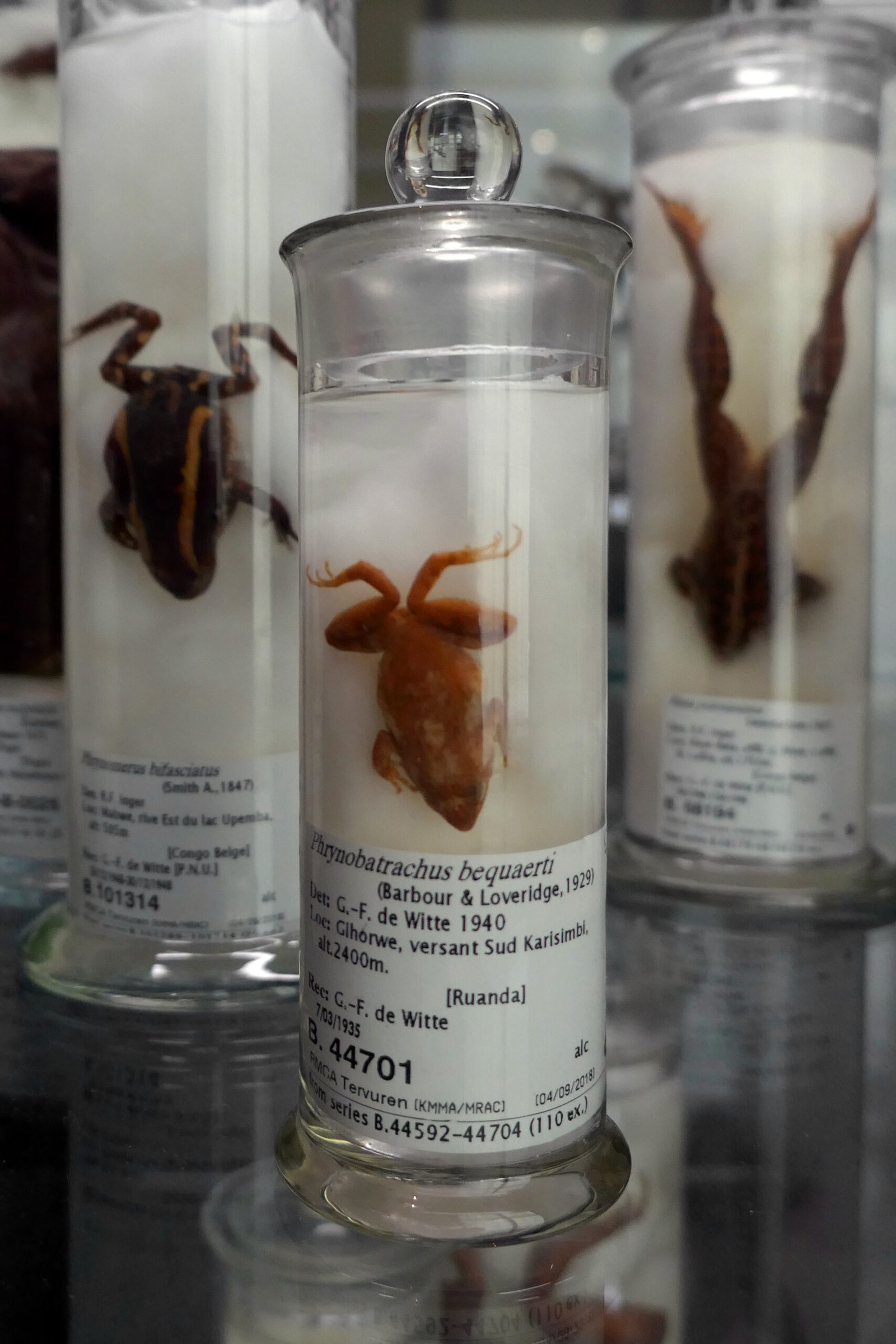
Native to the lush, humid forests of Central Africa, this remarkable frog can be found in countries like Cameroon, Nigeria, and Gabon. Its natural habitat is the fast-flowing streams and rivers hidden beneath dense canopies. These waterways are full of life but also danger, making it crucial for the Hairy Frog to be an expert at hiding and defending itself. The thick jungle not only provides camouflage but also adds to the mystery, as observing these frogs in their natural environment is no easy feat.
The Bizarre Bone-Breaking Defense

Perhaps the most jaw-dropping fact about the Hairy Frog is its self-destructive defense strategy. When threatened, this amphibian literally snaps the bones in its toes, forcing the sharp fragments through its own skin to create makeshift claws. This is unlike anything seen in other vertebrates. It’s as if the frog is willing to injure itself just to survive—an act both horrifying and heroic. This extreme measure confuses and often deters predators, giving the frog a fighting chance.
How Do the Claws Work?
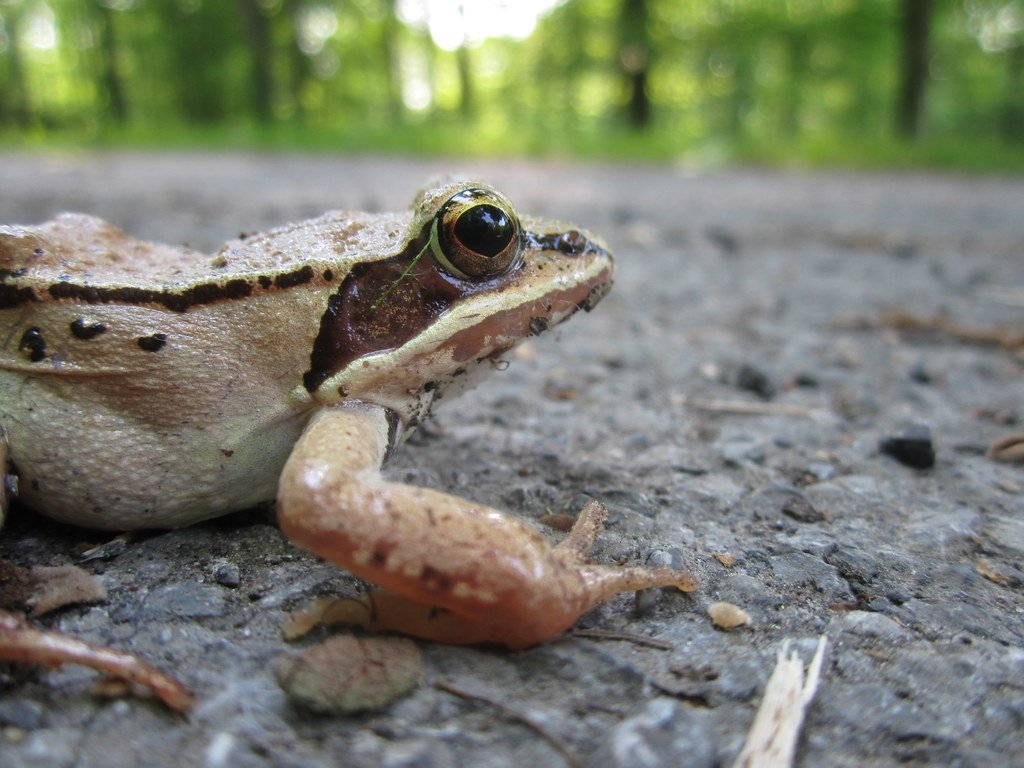
The mechanics of the Hairy Frog’s claws are both gruesome and ingenious. Underneath the skin of each hind foot, the frog’s toe bones are connected to powerful muscles. When danger looms, these muscles contract and break the bone at a weak point, pushing it out through the toe pad. The exposed bone acts as a sharp, temporary claw. There’s no sheath to retract the claw, so it’s a one-way ticket for the frog—once the threat is gone, it must heal the wound, and the bone eventually gets absorbed back into the toe.
Why Such a Painful Adaptation?

Nature’s logic can sometimes be brutal. For the Hairy Frog, evolving this self-mutilating defense likely resulted from facing relentless predators. In the wild, survival often means choosing the lesser of two evils. The pain and damage of breaking its own bones are preferable to being eaten by a snake, bird, or mammal. This adaptation shows just how far evolution can go, crafting bizarre solutions for survival in the harshest environments.
The Hairy Frog’s Life Cycle
Like many amphibians, Hairy Frogs begin life as eggs laid in water. Tadpoles emerge and spend their early weeks navigating the currents and avoiding hungry mouths. As they grow, the tadpoles undergo a dramatic transformation, sprouting legs and gradually losing their tails. Males develop the iconic “hairy” skin filaments during breeding season, a sign they’re ready to attract mates. Life in the rainforest is tough, so only the most resilient frogs make it to adulthood.
Hunting and Diet
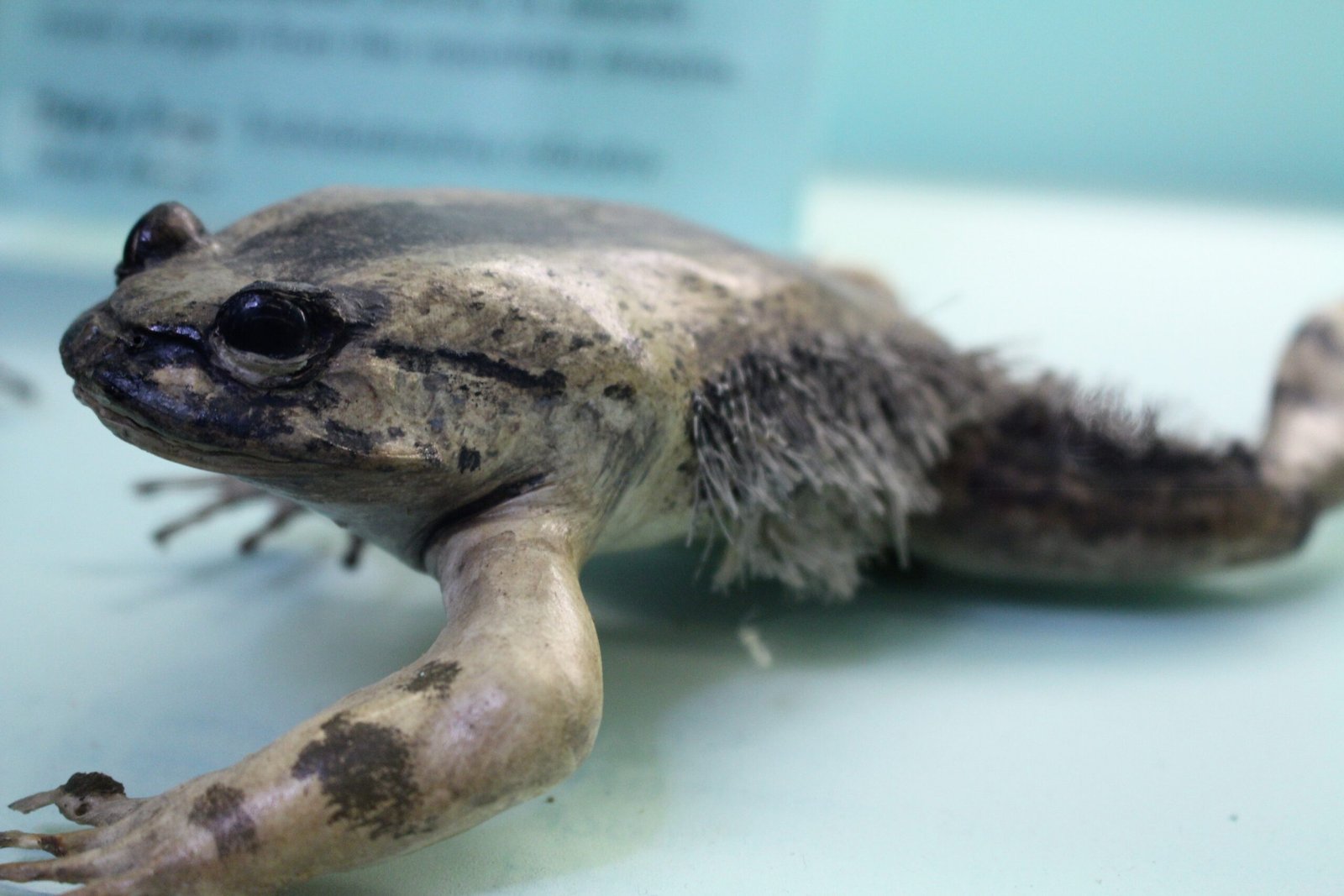
Hairy Frogs are carnivores, and their menu is as wild as their defense strategy. They feast on insects, spiders, worms, and even smaller frogs. With powerful jaws and a quick strike, they’re more formidable predators than their awkward looks suggest. They hunt mostly at night, using stealth and patience to ambush unsuspecting prey. In their watery world, every meal is a victory against starvation and the constant threat of becoming prey themselves.
Amply Adapted for Aquatic Life
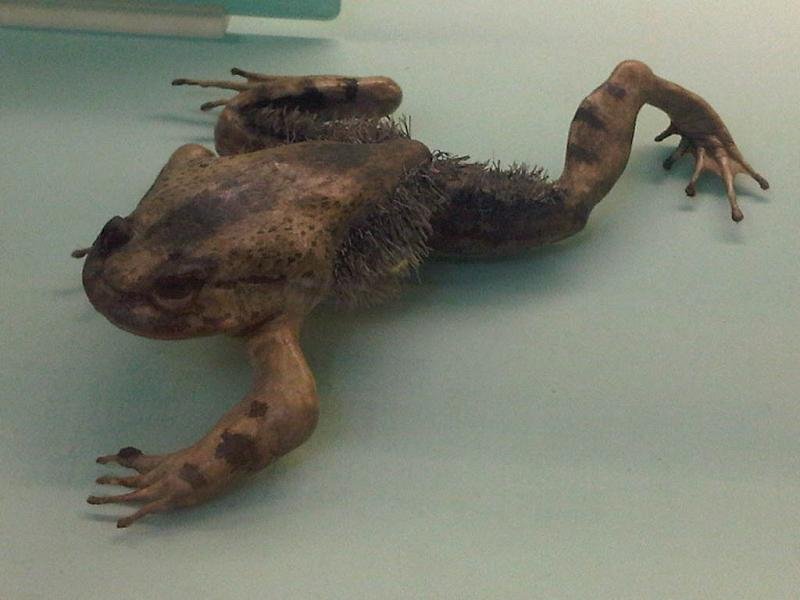
Despite spending time on land, the Hairy Frog is a master of aquatic living. Its strong, webbed hind feet make it an excellent swimmer, darting through rapids with ease. The “hairy” skin extensions help it absorb extra oxygen, acting like built-in gills. This adaptation is essential in fast-moving streams where oxygen levels can fluctuate. The frog’s body is robust and muscular, built for both defense and the demands of a watery home.
Mating Rituals and Parental Care
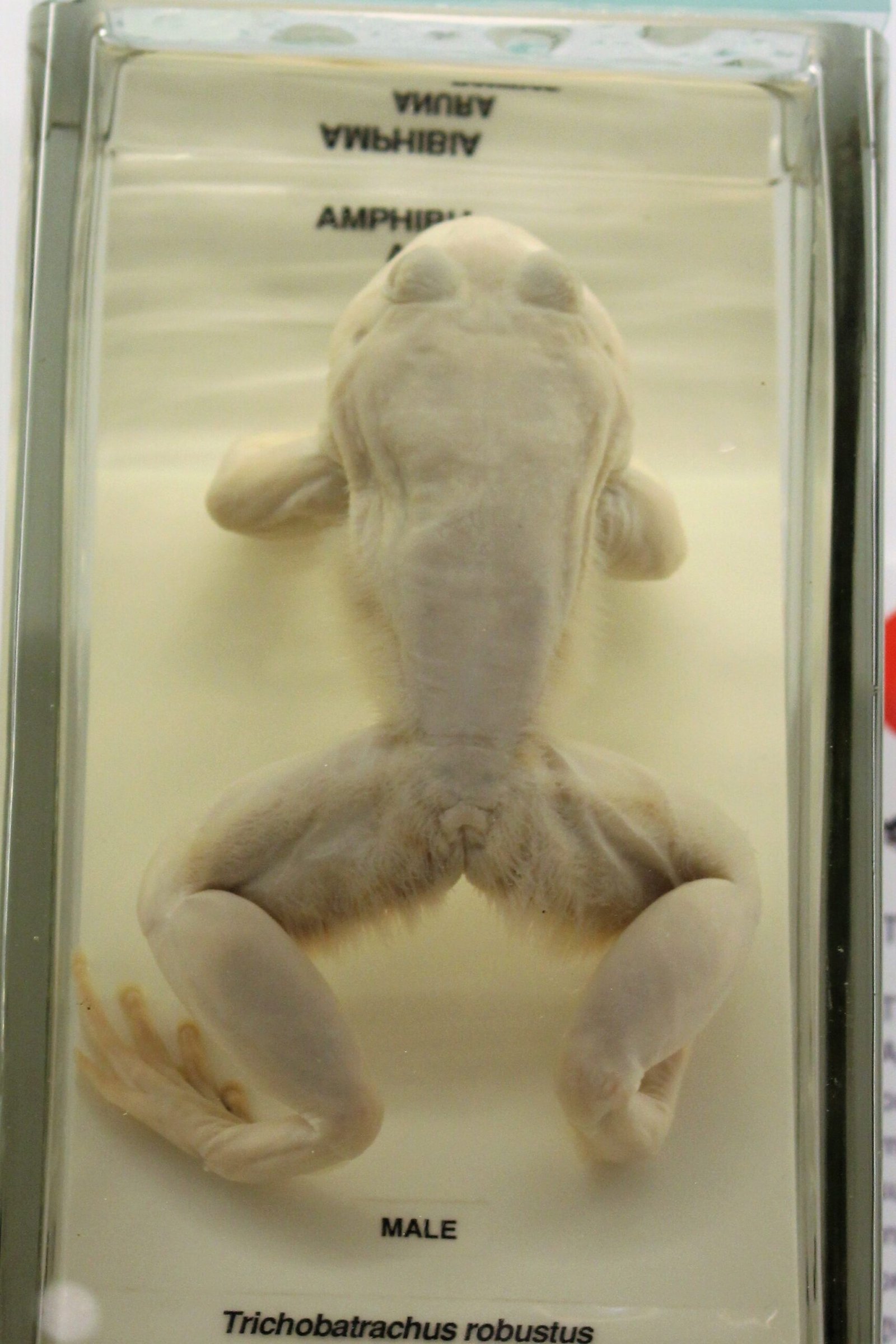
During the rainy season, male Hairy Frogs become especially active, searching for mates and defending territories. The males’ hairy filaments are thought to be attractive to females, signaling health and readiness. Females lay hundreds of eggs in water, attaching them to submerged vegetation. After fertilization, the male may guard the area, fending off rivals and potential threats. It’s a tough job, but ensuring the next generation survives is worth every risk.
Threats and Conservation Concerns

Though not currently classified as endangered, Hairy Frogs face threats from habitat loss, pollution, and hunting. In some regions, local people hunt them for food, drawn by their unusual appearance and reputed medicinal properties. Deforestation and water pollution also take a toll, reducing the safe spaces these frogs need to thrive. As with many unique creatures, their survival depends on both nature’s resilience and human responsibility.
The Hairy Frog’s Place in Science and Culture
The Hairy Frog is a favorite among herpetologists and wildlife enthusiasts because of its strange adaptations. Its bone-breaking claws have inspired comparisons to comic book superheroes and sparked debates about the limits of animal evolution. In local folklore, the frog is sometimes viewed with awe or fear, a symbol of the strange magic found in the rainforest’s depths. Scientists continue to study this remarkable amphibian, hoping to unlock more secrets about its biology and survival strategies.
Reflections on Nature’s Wonders
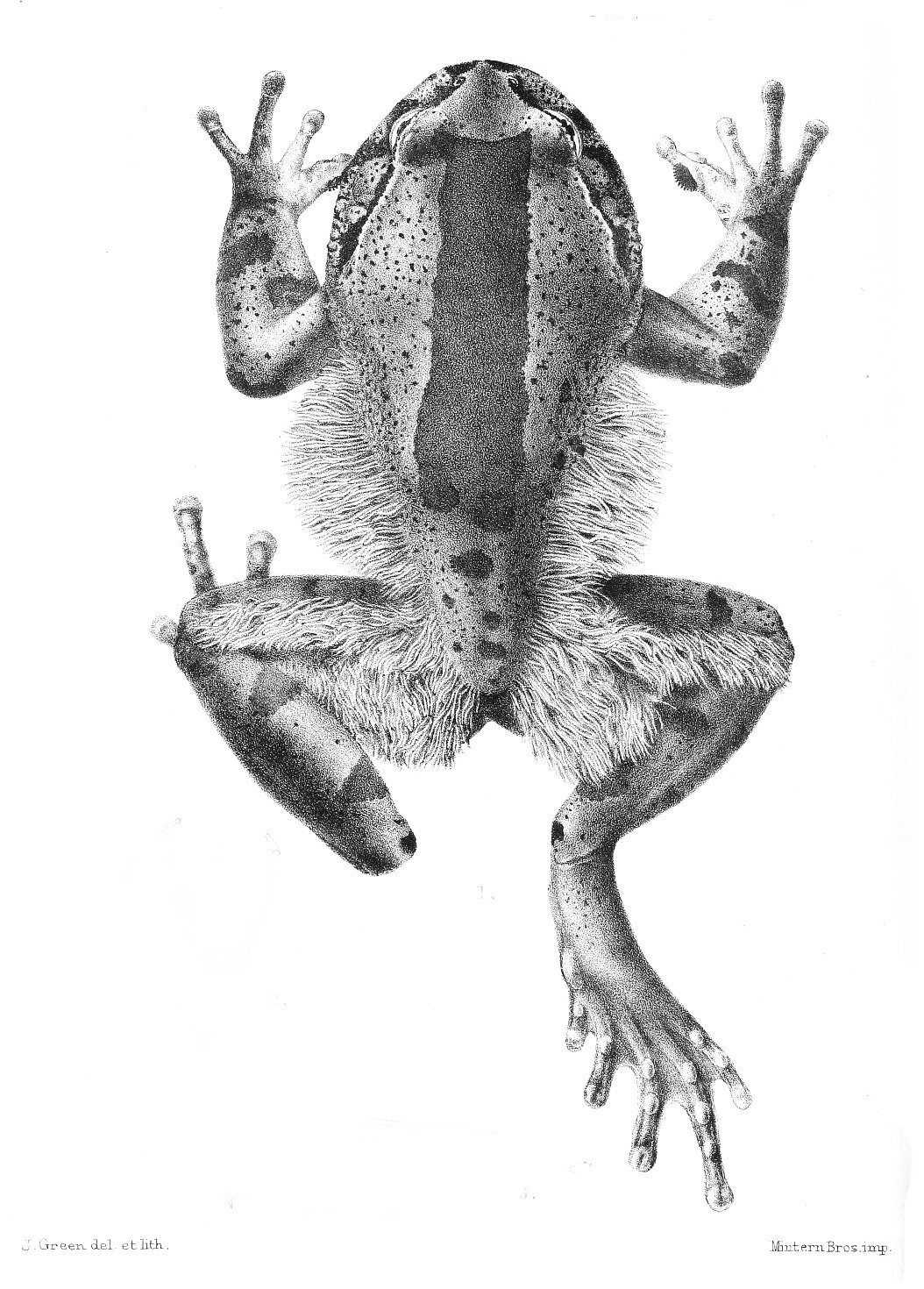
The story of the Hairy Frog is a powerful reminder that nature is full of surprises—many of them stranger and more dramatic than fiction. This small, unassuming amphibian reveals the lengths to which life will go to endure. From its hairy disguise to its bone-breaking defense, every detail tells a story of adaptation, struggle, and resilience. The next time you wonder what marvels the natural world still hides, consider the Hairy Frog—a creature whose very bones whisper a tale of survival against all odds.




